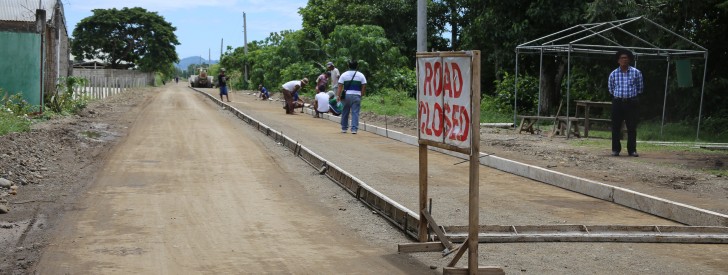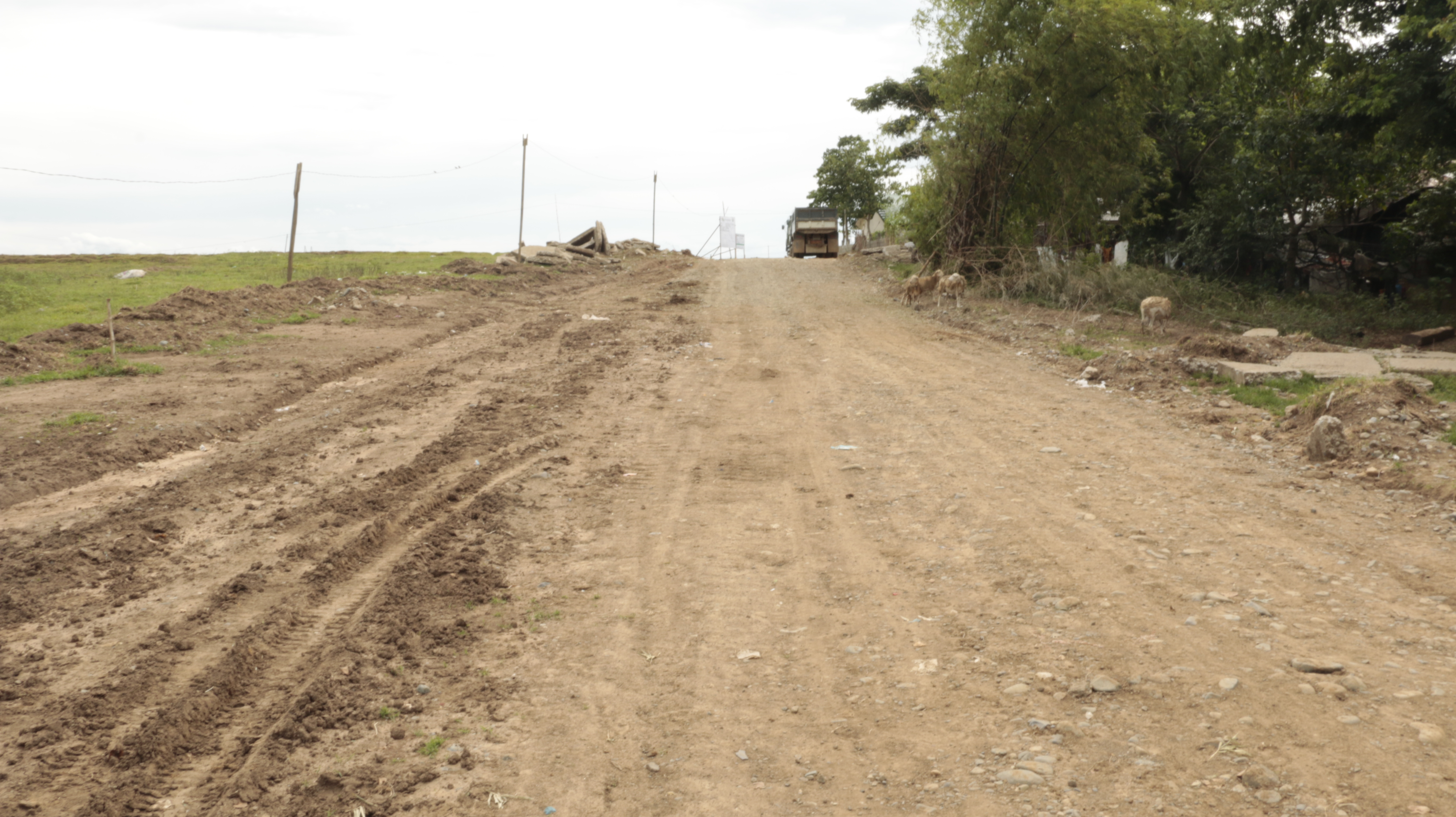 The Rehabilitation of the Olango-Siempre Viva-Trinidad-Manano FMR is currently ongoing with 18.8% accomplishment. (as of August 14, 2015)
The Rehabilitation of the Olango-Siempre Viva-Trinidad-Manano FMR is currently ongoing with 18.8% accomplishment. (as of August 14, 2015) WB Specialist inspects Isabela SPs
August 8, 2015
World Bank Representative Dr. Ashok Kumar, a Senior Highway Specialist, together with the composite team from the National Project Coordination Office (NPCO), Project Support Office (PSO) Luzon A, Regional Project Coordination Office 2 (RPCO2), and Provincial Project Management Implementing Unit (PPMIU) trooped to I-BUILD subprojects located in the municipalities of Mallig and Cabagan, Isabela.
In Mallig, the composite team visited the 9.17-kilomer FMR traversing 5 barangays, namely Olango-Siempre Viva-Trinidad-Manano with a total project cost of P62,452,953.45. From there, the team travelled altogether to inspect the Magassi-Union-Camasi FMR in Cabagan and Tumauini with a length of 4.93 kilometers costing P40,203,931.31 pesos.
Dr. Kumar, who is a holder of a doctoral degree in Civil Engineering, is duty bond to evaluate the strict observance of the imposed world class specifications in the entire project both in its physical and manpower aspects.
En route from Tuguegarao Airport to the five barangay coverage of the on-going construction of the farm to market roads (FMRs) starting from Barangay Olango in Mallig, Dr. Kumar took pictures of the newly-concreted portions of the FMR particularly noting details on the road’s width and thickness, embankment, canals, compactness on road sub-base or foundation, watering process, gradient, including the conduct of soil analysis.
He was similarly interested in the capabilities of contractors both in quality control and material testing of equipments, how such and often it is being done, readily available hard and soft copies of project documents, total number of equipment and engineers deployed in the project area, as well as the sufficiency of safety gears for the entire workforce.
At the contractor’s office site, the World Bank representative was welcomed by Mallig Mayor Pedro Flores, who assured that the road’s maintenance shall be sustained through an Ordinance appropriating funds jointly coming from local government unit (LGU) and the five barangay beneficiaries’ internal revenue allotment (IRA). The Provincial Local Government Unit (PLGU) of Isabela has also committed funds for maintenance over ten years after project completion and turn-over.
“We shall see to it that the efforts and the funds behind these FMRs will not render futile as we shall mobilize constituents from the barangays through the Barangay Inspectorate Team (BIT),” the mayor emphasized.
“Road shoulders must be properly filed up with boulders to forestall road accidents particularly involving single motorcycles,” Dr. Kumar strongly suggested.
Mayor Flores added that the project was considered purely “by necessity” with his constituents in mind who are generally small farm workers who need quick access to quality roads leading to and from the town proper either to purchase basic needs or market their farm produce.
“The FMRs, if fully concreted shall speed up our means of transporting our sick that we normally carry by way of bamboo or wooden poles lullabyed on a bed sheet and carried on foot to distant hospitals,” native residents in the project area attested as Dr. Kumar with the joint team chanced to meet while heading on to the stockpiling site.
RTD Lorenzo M. Caranguian, PRDP RPCO2 Focal Person, took special notice of the inevitable increase in price per kilogram of palay and corn produce of farmers on account of road accessibility both beneficial to agricultural farm workers and traders.
“Now that roads are improved through DA-PRDP, farmers may soon be capacitated to buy their own three to four wheel farm machineries as means of transporting goods and people,” RTD Caranguian said.
Dir. Lucrecio R. Alviar, PRDP RPCO2 Project Director said, “Sooner, selling price of agricultural lands will reach a million per hectare with the present prevailing price of P500,000 to P700,000.”
The composite team with contractors present in the exit conference facilitated by Dr. Freddie B. Corsino, PRDP RFO2 InfoAce Unit Head, synthesized the weaknesses and strengths seen in the two-day site visit of World Bank Representative Dr. Ashok Kumar.
Initially, Dr. Kumar shared insights on main requirements of good engineering designs considering the project’s durability, maintenance, and implementation.
Dr. Andrew B. Villacorta, PSO Luzon A Project Director, raised the materiality of having both Agricultural Engineers and Civil Engineers in the entire team.
“Most engineers supervising are Agricultural Engineers. We find it difficult to hire Civil Engineers as we seem to have but a very few of them. Does this fact matter to you?” Dr. Villacorta asked.
“It actually matters,” Dr. Kumar replied, “since civil engineers would be in a better position to appreciate what the physical aspects of the project are all about.”
He added that the road’s thickness does not actually matter that much as what spells the difference is the hardened and properly compacted sub base or foundation of the road. (Ferdinand Narciso, InfoACE RPCO2)

